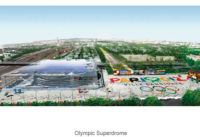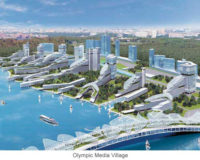Olympics 2012: Madrid
Madrid plan would show off a modern city and ambitious designs

Photo courtesy Madrid 2012

Photo courtesy Madrid 2012

Photo courtesy Madrid 2012

Photo courtesy Madrid 2012




Madrid’s bid to host the 2012 Olympics has little in common with Barcelona’s landmark effort of 1992. Barcelona used the games as a catalyst for major urban improvements, such as the recovery of its industrial waterfront and the construction of a ring highway. Madrid, on the other hand, has already carried out major improvements in terms of transportation, mass housing, and community services. And despite Mayor Alberto Ruiz Gallardón’s efforts, Madrid lacks some of the drive for recognition that mobilized the northern city. A Madrid Olympics will thus serve mainly to show off one of Europe’s most well-equipped capitals, with spotless new highways, and train and subway lines crisscrossing a new urban periphery of housing developments. Most events will be held in refurbished locales on this periphery, including the Olympic Stadium, a composition of concrete planes and arcs built on the city’s eastern edge in 1994 by Seville architects Antonio Cruz and Antonio Ortíz, who will enlarge it from 20,000 to 66,000 seats.
The Olympic ring will be located around the stadium, and will include a new Center for Aquatic Sports, designed by Juan José Medina, and a covered sports pavilion and velodrome. The Olympic Village, across a highway from the ring, would house 16,800 and would be transformed after the games into housing, hotels, and offices.
The architecture can be previewed from two facilities already awarded in competitions, the Olympic Tennis Center, south of the city, by Dominique Perrault, and the Gavia Park, to the southeast, awarded to Toyo Ito, for whitewater events. Perrault’s “Magic Box” of steel, wood, and glass will feature, in his words, “a protective skin composed of various fabrics: filtering, reflective, and opaque by day, sparkling at night.” Ito’s park features lakes and channels of a fractal geometry that use recycled water from a sewage treatment plant. Such sustainable design is a major theme, and Olympic venues will be linked by a green belt and accessible by public transportation. Olympic Village housing will include solar collectors, recycled water, and passive cooling and heating. The swimming facility uses ozone instead of chlorine, ammonia as a refrigeration fluid, and has a photovoltaic array on its movable roof.








